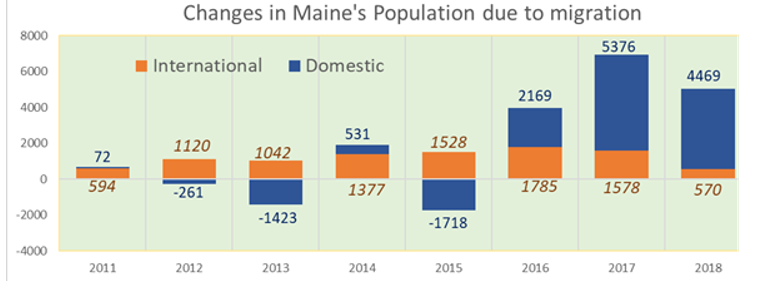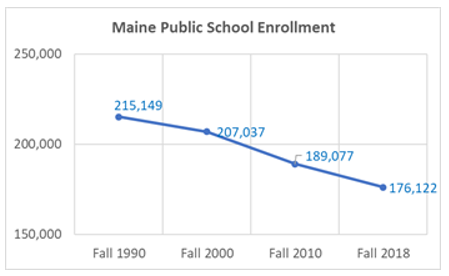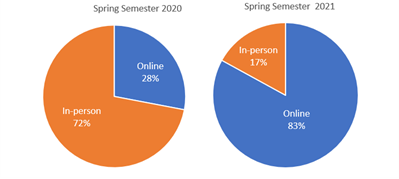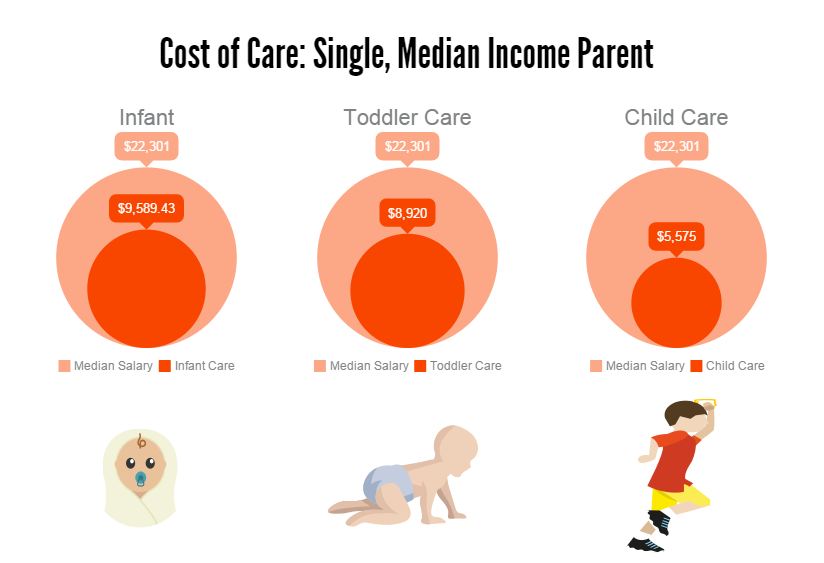The changing demographics of Maine
- Maine and Vermont experienced the highest child population declines in the nation , with 18 percent reductions.
- Five of the six New England states, as well as, New York, Pennsylvania and Ohio, also experienced child population declines. Massachusetts alone had one percent growth.
- While Maine’s overall child population decreased by 55,432, the non-white child population increased by 14,916 , while the number of white children decreased by 70,348, or 24 percent.
- The non-white child population in Maine is nine percent, compared to three percent in 1990.
- Child populations went down in every Maine county , though it ranged from a four percent reduction in Cumberland County to a 45 percent reduction in Aroostook County.
- While the child population is declining in every part of Maine, the total population in Maine for all ages grew by 110,476, or 0.3 percent per year. This population growth is due to more people ages 56 and over and more people ages 24-37.
- While every county in Maine experienced losses in the number of children, every county in Maine had increases in the number of people over age 65. Statewide, there are 64,000 more people over age 65 than in 2010. At a county level, the growth for this age group varied from a low of 18 percent in Aroostook County to a high of 41 percent in Waldo County.
- Maine and West Virginia are the only states where deaths outnumber births in 2018. Maine’s deaths exceeded births by 7,412.
- During 2010-2018 there was a domestic in-migration of people of all ages from other states to Maine of 7,959. This number is about 500 more than the loss of population due to deaths exceeding births. International migration to Maine during that time was 10,343, so if not for in-migration, both domestic and international, the child population declines would be greater.
 This graph shows how domestic and international migration varied substantially year to year in Maine for all ages, 2011-2018. In the last two years, people moving to Maine from other states far outnumbered international immigrants moving to Maine
.
This graph shows how domestic and international migration varied substantially year to year in Maine for all ages, 2011-2018. In the last two years, people moving to Maine from other states far outnumbered international immigrants moving to Maine
.
- Aroostook County had the greatest decline of child population by number and percent, with 9,998 fewer children in 2018 compared to 1990, or 45 percent less. The reduction for Aroostook County was the largest in the first ten years, 1990-2000, while for the next two time periods, the declines continued, but were only half as large.
- Piscataquis County saw a decline in the child population that was almost as large as Aroostook by percent, with the child population down 42 percent, or 2,045 children, between 1990-2018.
- Meanwhile, Washington, Franklin, Somerset and Lincoln Counties had child population reductions of between 25 and 34 percent from 1990-2018.
- Knox, Lincoln and Sagadahoc Counties did not experience declines in child population until 2000. These were possibly related to the military base closing in Brunswick, as well as a decline in the number of workers at Bath Iron Works.
- Somerset County has been experiencing accelerated reductions in child population, with 1,060 fewer children in the county between 1990-2000, 1,385 fewer between 2000-2010, and 1,544 fewer between 2010-2018.
- On the other hand, York and Cumberland Counties had the smallest reductions in child population between 1990 and 2018, with declines of 10 percent and four percent, respectively. Both counties gained in child population between 1990 and 2000, but like all other Maine counties, they experienced declines in child population between 2000-2010 and 2010-2018.

The effects of declines in child population have been profound, particularly for schools in Maine. According to the Maine Department of Education, more than 60 schools in Maine — mostly elementary and middle schools — have closed since the 2008-2009 school year because of enrollment declines. 70 other schools have been consolidated or reconfigured, resulting in at least one less school when the change was made. As S.A.D. 13 Superintendent Virginia Rebar noted , “ in rural areas, because of a lack of mills or larger businesses that offer employment, it’s difficult to maintain a number of schools when you don’t have the student population.” According to the National Center of Education Statistics , Maine’s public school enrollment declined by 39,000 students , or 19 percent, even including the pre-kindergarten classes for four-year-old’s that mostly weren’t present in 1990.


 The latest child population estimates released by the US Census in June 2019
The latest child population estimates released by the US Census in June 2019


